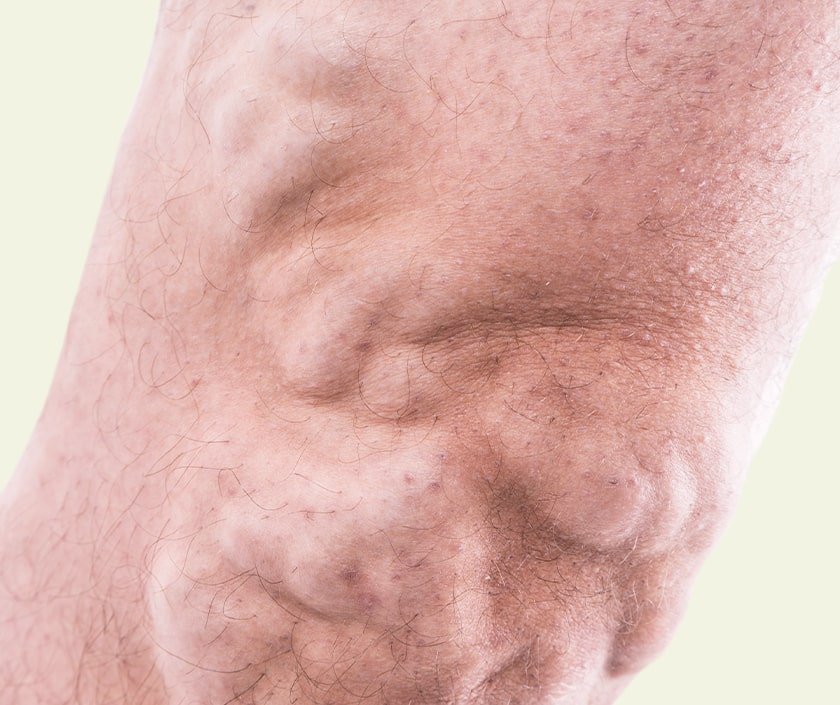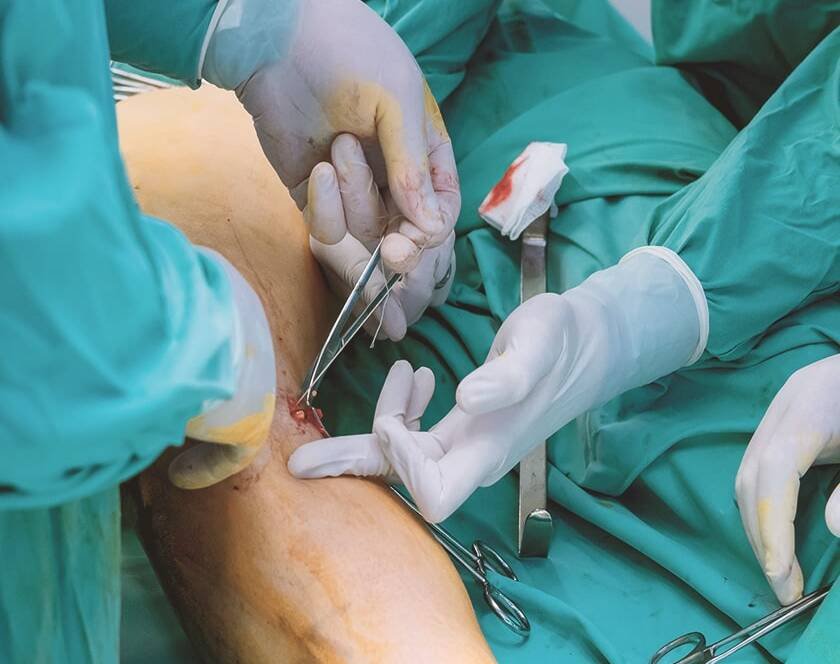Vascular malformations are abnormal growths or tangles of blood vessels that can occur anywhere in the body. They are congenital, meaning they are present at birth, and can occur in any blood vessel, from the smallest capillaries to the largest arteries and veins. They are classified into three main types:
- Venous malformations: These are composed of abnormal veins and are often dark blue or purple in color. They can occur anywhere in the body, but are most common in the skin and soft tissues.
- Arterial malformations: These are composed of abnormal arteries and are often bright red in color. They can occur anywhere in the body, but are most common in the head, neck, and limbs.
- Lymphatic malformations: These are composed of abnormal lymph vessels and can occur anywhere in the body, but are most common in the head and neck. They are often soft and compressible and can be flesh-colored or bluish in color.
Vascular malformations can vary in size and severity. Some may be asymptomatic, while others may cause pain, bleeding, or other symptoms. Treatment options vary depending on the type, location, and size of the malformation and may include observation, surgery, embolization, or sclerotherapy.
It is important to consult with a qualified healthcare professional to determine the best treatment option for your individual needs and goals.
If you have any questions regarding our services, please contact us or call at +91 9879546805.
Hear from our patients
EXCELLENTTrustindex verifies that the original source of the review is Google. The best doc in town Dr Ashutosh and the best help with him Dr Bhargav Thanks for all the help . 🌞Trustindex verifies that the original source of the review is Google. Doctor Chetan sir and Dr.Ashutosh Sir guided like no one explain. So satisfying and whatever is needed that only advice by themTrustindex verifies that the original source of the review is Google. Doctors and nursing staff are very kind and caring. Overall experience is great.Definitely recommend elegance clinicTrustindex verifies that the original source of the review is Google. Maru face heat water thi burn they gayelu hatu, pachi me Ashutosh sir pase thi treatment lidhi and have vadhare better che face , pehla jevu normal thatu che. To thanks dr Ashutosh Shah and all staffTrustindex verifies that the original source of the review is Google. I had done my lips surgery.. and I got amazing result..Thank you....Trustindex verifies that the original source of the review is Google. I struggled with gynecomastia and chest fat, which significantly impacted my mental health. Deciding to take action, I underwent surgery at Elegance Clinic, which I discovered through Google. I can confidently attest that it's one of the best clinics. Dr. Ashutosh Shah and Dr. Chetan Patel, along with their exceptional team, provided outstanding care throughout my journey. Their expertise and support during and after the procedure were invaluable. I'm deeply grateful to Dr. Ashutosh, Dr. Chetan, and their entire team for their compassion, professionalism, and remarkable care. My post-surgery recovery has been seamless, and I couldn't be more thankful.
Frequently Asked Questions
Having doubts and questions? These are few questions our customers normally ask us!
What is the purpose of hymenoplasty surgery?
Hymenoplasty is performed to reconstruct the hymen, which may be desired for cultural, religious, or personal reasons.
Can the hymen grow again?
The hymen does not regrow naturally; however, hymenoplasty surgically restores its presence.
Why is my hymen not opening?
Variations in hymen elasticity and opening are normal. If there are concerns, it’s best to consult a gynecologist.
Can a girl bleed after hymenoplasty?
Some bleeding is possible after hymenoplasty, similar to what might occur with the initial breaking of the hymen.
Can hymen bleed 2 times?
The hymen can only bleed once naturally. Post-hymenoplasty, it may bleed again upon rupture.
Does hymenoplasty restore virginity?
Hymenoplasty reconstructs the hymen physically but does not ‘restore’ virginity in a biological sense.
How many times can hymen bleed?
The hymen typically bleeds once upon tearing. After hymenoplasty, it may bleed again if ruptured.
Can a non-virgin bleed again?
Post-hymenoplasty, a woman may experience bleeding upon the hymen’s rupture, similar to the first time.
Is it necessary to bleed on the first night?
Bleeding is not a universal indicator of virginity or sexual experience. It varies among individuals.
How can a husband know that his wife is not a virgin?
Virginity cannot be determined physically. It’s a personal aspect that relies on trust and communication.
How long does hymen take to heal?
The healing time for hymenoplasty is typically around 6-8 weeks, but it can vary.
Do boys bleed on the first night?
Boys do not experience bleeding related to virginity.
Did your wife bleed on the first night?
This is a personal and private matter, and bleeding is not a definitive indicator of virginity.
Can you bleed if your partner is too big?
Bleeding can occur due to various reasons, including the size of the partner, but it’s not a certainty.
Contact Us
Ready to discuss? Fill out our contact form for a confidential consultation.








